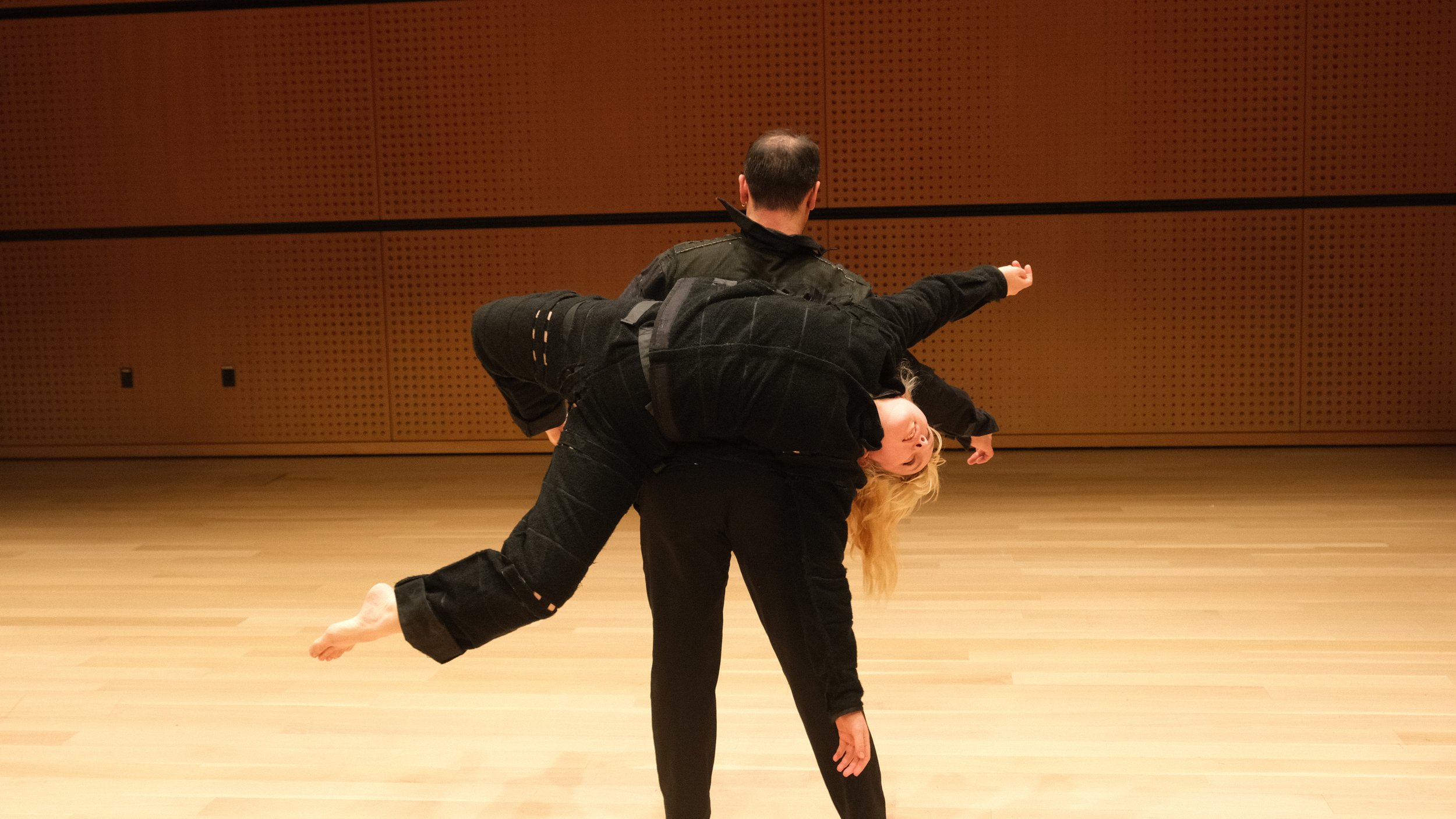Microgravity and Art: Insights from Two Unique Residencies
This March, the Conference for Research on Choreographic Interfaces (CRCI) and the Brown Arts Institute hosted two exciting residencies focused on the intersection of dance, technology, and space exploration. These residencies brought together leading artists and thinkers to explore new frontiers in choreography and performance.
Early Phase Residency with Sage Ni’Ja Whitson
The Early Phase Residency welcomed acclaimed artist Sage Ni’Ja Whitson, who began developing their latest project, Trans Trappist the Extraterrestrial: Flight of Seven Planets. This experimental trap opera is a fusion of live performance art and virtual reality sculpture, made specifically for microgravity environments.
Whitson embodies the role of Trans Trappist, a Transgender Extraterrestrial channeling the galactic wisdom of the TRAPPIST planetary system. The project weaves together themes of Black imagination, Trap music, and space exploration to propose radical new visions for art and science.
An award-winning, anti-disciplinary artist, Whitson’s work spans dark matter, Black divinities, and the sacred within conceptual frameworks of science and technology. Their career includes fellowships from DAAD, MacDowell, and United States Artists, as well as two "Bessie" Awards, positioning them as a trailblazer in XR (extended reality) and performance.
During their residency, Whitson also spent time on campus at the Granoff Center at Brown University and the Orwig Music Library, where they engaged with various resources to further their exploration of art in microgravity.
The Early Phase Residency is part of CRCI’s larger commitment to supporting groundbreaking research at the intersection of choreography, technology, and speculative futures.
Immersive Residency: Dance and Choreography for Microgravity
In parallel, the CRCI Immersive Residency welcomed four dynamic dance artists: Laila Franklin, Michael Figueroa, Sasha Peterson, and CRCI’s own Kate Gow. Over the course of six days, the artists immersed themselves in hands-on research exploring how choreography and movement can be adapted for microgravity environments, laying the groundwork for future space-bound performance projects.
Meet the Resident Artists
Michael Figueroa (he/him) is a performer and educator based in Asheville, NC. His work delves into themes of personal narrative, rule-breaking, and audience participation.
Laila J. Franklin is a Boston-based multidisciplinary dance artist and a Dance Magazine "25 to Watch." Her choreographic work has been commissioned by institutions such as Brown University and Boston Conservatory.
Sasha Peterson is a dancer and educator from Boston who performs with Ruckus Dance and VLA DANCE. She also collaborates with Continuum Dance Project.
Kate Gow is a freelance dancer, technologist, and CRCI’s digital archivist. A graduate of The Boston Conservatory, she specializes in accessible web design and the documentation of choreographic research.
Residency Highlights
Day 1 - Orientation and Studio Exploration:
The residency kicked off with a welcome breakfast at Ceremony Café before diving into a collaborative session at Brown’s Lindemann Performing Arts Center. The artists engaged in a warm-up and movement phrase exploration, laying the foundation for the rest of their research. Videographer Martin captured early movement experiments to document how these base phrases could evolve in diverse settings.
Day 2 - Anti-Gravity Adventures:
From soaring at Altitude Trampoline Park to participating in a private aerial yoga session at Raffa Yoga, the artists embodied the experience of weightlessness on Earth. The day also included in-depth discussions on the residency’s themes and methodologies.
Day 3 - Creative Labs & Velcro Suits:
The group gathered for a photoshoot at Lindemann and Michael and Sasha later experimented with Velcro suits at Riley Hall, testing how adhesion and resistance could inspire choreographic tools for microgravity.
Day 4 -Studio Time and Aquatic Motion:
Sunday featured studio time at Metamorphosis/Ten 31 in Pawtucket, followed by a swim at the Katherine Moran Coleman Aquatics Center. The artists explored buoyancy and fluid movement as another analogue for reduced gravity.
Day 5 - Engaging the Community:
In addition to studio time and a demonstration for local 5th graders at the Movement Lab, the artists reflected on their work in a final debrief session.
Day 6 - Ashton Graybiel Spatial Orientation Laboratory:
On the final day, the artists took a field trip to Brandeis University’s AGSOL lab, home to cutting-edge spatial orientation research. They learned about the lab’s artificial gravity simulations and participated in demos featuring the Multi-Axis Rotation System (MARS) and the Rotating Room. Sage Ni’Ja Whitson, who arrived in Providence on March 10th, also participated in the day’s activities, furthering their exploration of space-related performance and technological research.
What’s Next?
The CRCI Immersive Residency artists' research will culminate in a showcase at the June 2025 CRCI conference, where their findings will be shared and discussed. Additionally, public classes related to the residency research will be offered. To learn more and sign up for these classes, visit the CRCI 2025: Moondance page.
Special Thanks:
These residencies were made possible through the support of the Brown Arts Institute and CRCI at Brown University. The dedication and creative contributions of all involved—including the artists, facilitators Ariane, Rishika, Martin, Noor and Sydney—helped make this phase of research a success.
Stay tuned for more updates as we continue to explore the future of choreography in microgravity!







